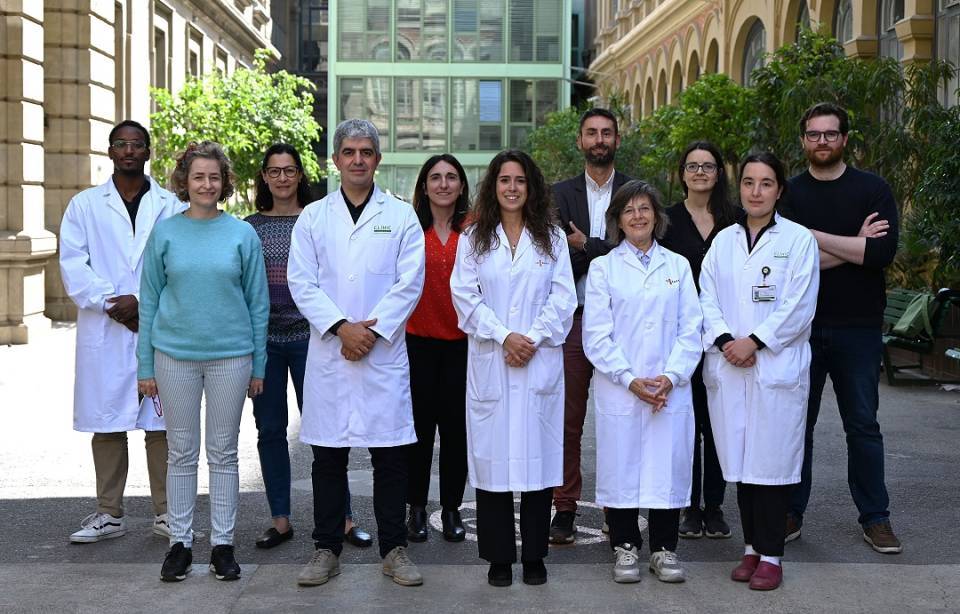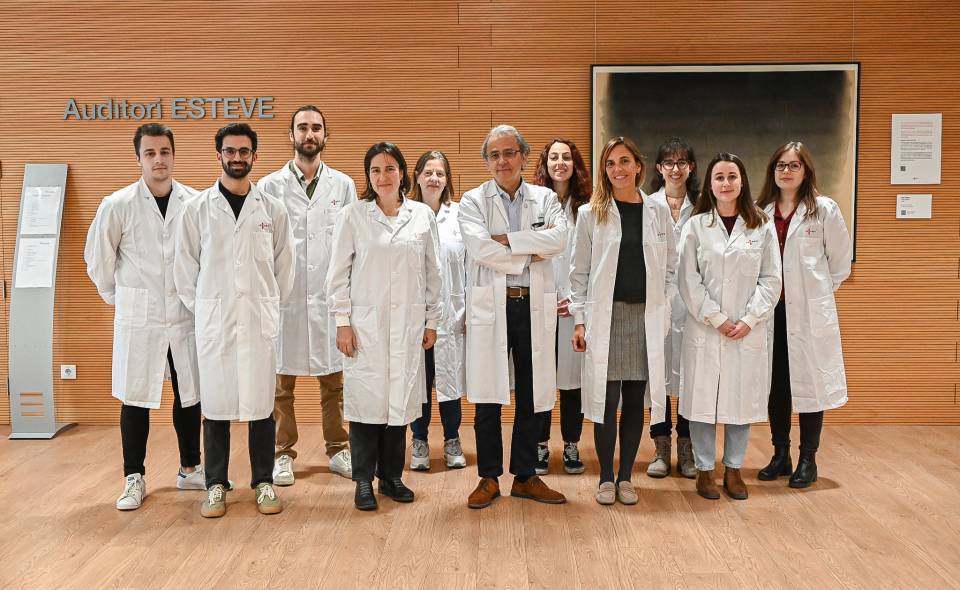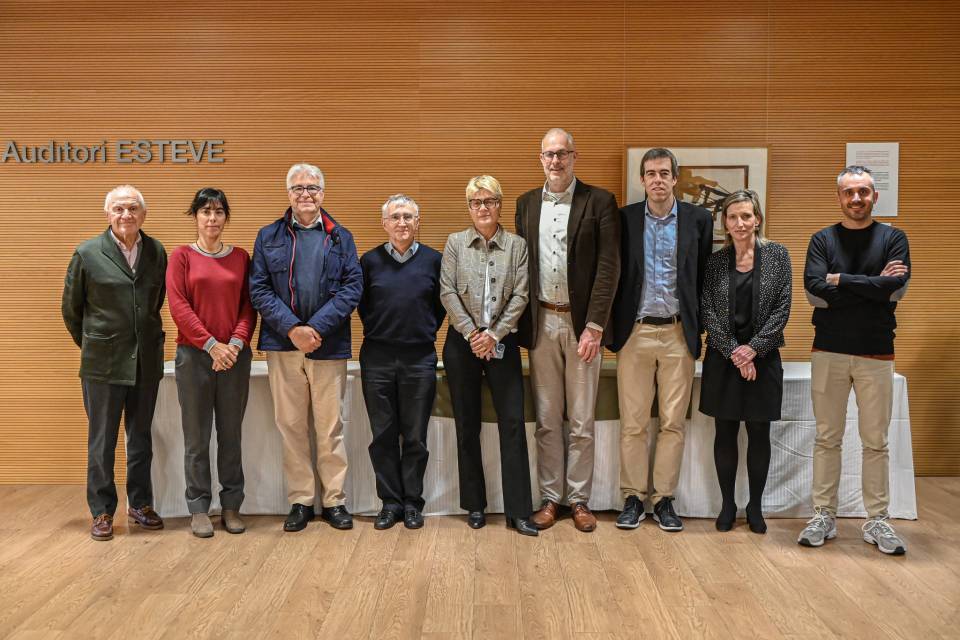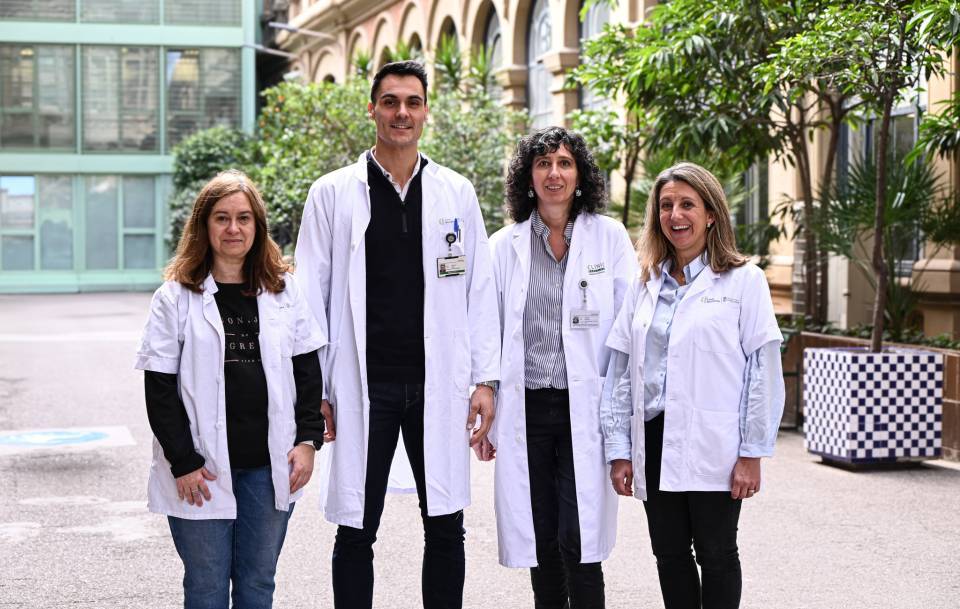Glioblastoma is the most aggressive nervous system tumour with the worst prognosis. The standard treatment consists of surgery followed by radiotherapy and chemotherapy, but it is very ineffective and patients’ average survival time is around 15 months. In a very high percentage of cases, the tumour recurs after treatment at the edge of the cavity created by the initial surgery. Cancer cells probably remain in this area, having infiltrated the surrounding tissue, which go unnoticed during surgery. This leads researchers to think that using a local treatment capable of eliminating them may be key to controlling the disease.
“One of the most promising therapeutic strategies, focused on the surgical cavity, is photodynamic therapy”, explains Josep J. González, the main researcher at the Experimental Laboratory of Neurosurgical Oncology at Hospital Clínic Barcelona and a researcher in the IDIBAPS group Cerebrovascular diseases, led by Ángel Chamorro. “This treatment modality uses 5-aminolevulinic acid (5-ALA), a photosensitising molecule that accumulates in cancer cells in the form of protoporphyrin IX, which can emit fuchsia fluorescence when activated with light of the violet spectrum. The use of 5-ALA makes it possible to distinguish the tumour from healthy tissue during resection, which increases the degree of tumour removal. In addition, under red light, protoporphyrin IX produces oxidising agents that trigger cellular mechanisms that can induce cancer cell death. This where the name photodynamic therapy comes from, since its effect depends on the type of light it receives”.
González led a study published in the journal Cells that evaluates the effect of 5-ALA treatment in a three-dimensional glioblastoma model. The project was carried out in two stages.
In the first stage, the researchers cultivated glioblastoma cell lines collected from patients during surgery, forming small spheres that simulated the original tumours. “Along with the spheroids, we also developed brain organoids from pluripotent human cells, which means that they can transform into cells of any mature tissue. The aim was to obtain organoids with the structural characteristics of a mature human brain and to cultivate them together with the spheroids, in order to simulate the conditions closest to the brain of a patient with glioblastoma”, says Leire Pedrosa, the first co-author of the study.

In the second stage, this model was used to establish the dose of 5-ALA needed to achieve fluorescence in tumour tissue, but not in healthy tissue, so that the therapy only affected the cancer. Under these conditions, the effect of the drug and the irradiation time on the mortality and proliferation capacity of the glioblastoma was analysed. “The results show that photodynamic therapy using 5-ALA is effective and selective, as it reduces the viability of the tumour and activates programmed cell death processes, without altering the healthy cells”, González says.
According to the authors, their work demonstrates that the model can be a very powerful study platform to evaluate different therapeutic strategies for glioblastoma, since it simulates the neural tissue and the tumour as a whole and analyses the interaction between them in the patient’s body. The study confirms the effectiveness of photodynamic therapy against glioblastoma cells, while respecting healthy tissue. However, they conclude that new studies must be conducted in animal and human models to establish the use of the therapy and to find a cure for this terrible and lethal disease.
Researchers from the Spanish National Research Council (CSIC) and the University of Barcelona’s Faculty of Biology participated in the study. It received funding from the company Gebro Pharma through a collaboration agreement that began in 2019. Today, the agreement remains active and work is underway on new stages of the project.
Reference article
Pedrosa, L.; Bedia, C.; Diao, D.; Mosteiro, A.; Ferrés, A.; Stanzani, E.; Martínez-Soler, F.; Tortosa, A.; Pineda, E.; Aldecoa, I.,et al. Preclinical Studies with Glioblastoma Brain Organoid Co-Cultures Show Efficient 5-ALA Photodynamic Therapy. Cells 2023, 12, 1125.https://doi.org/10.3390/cells12081125




